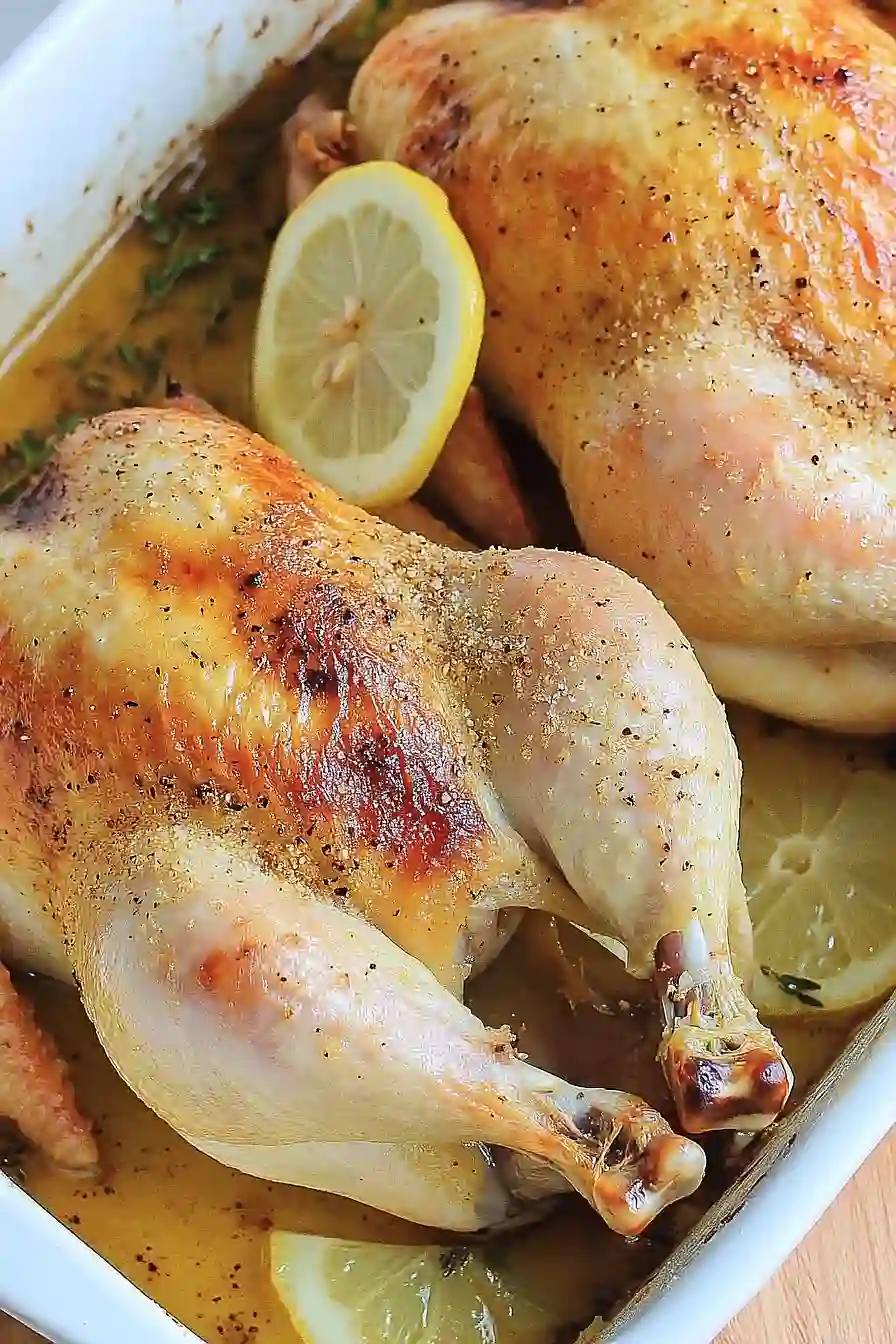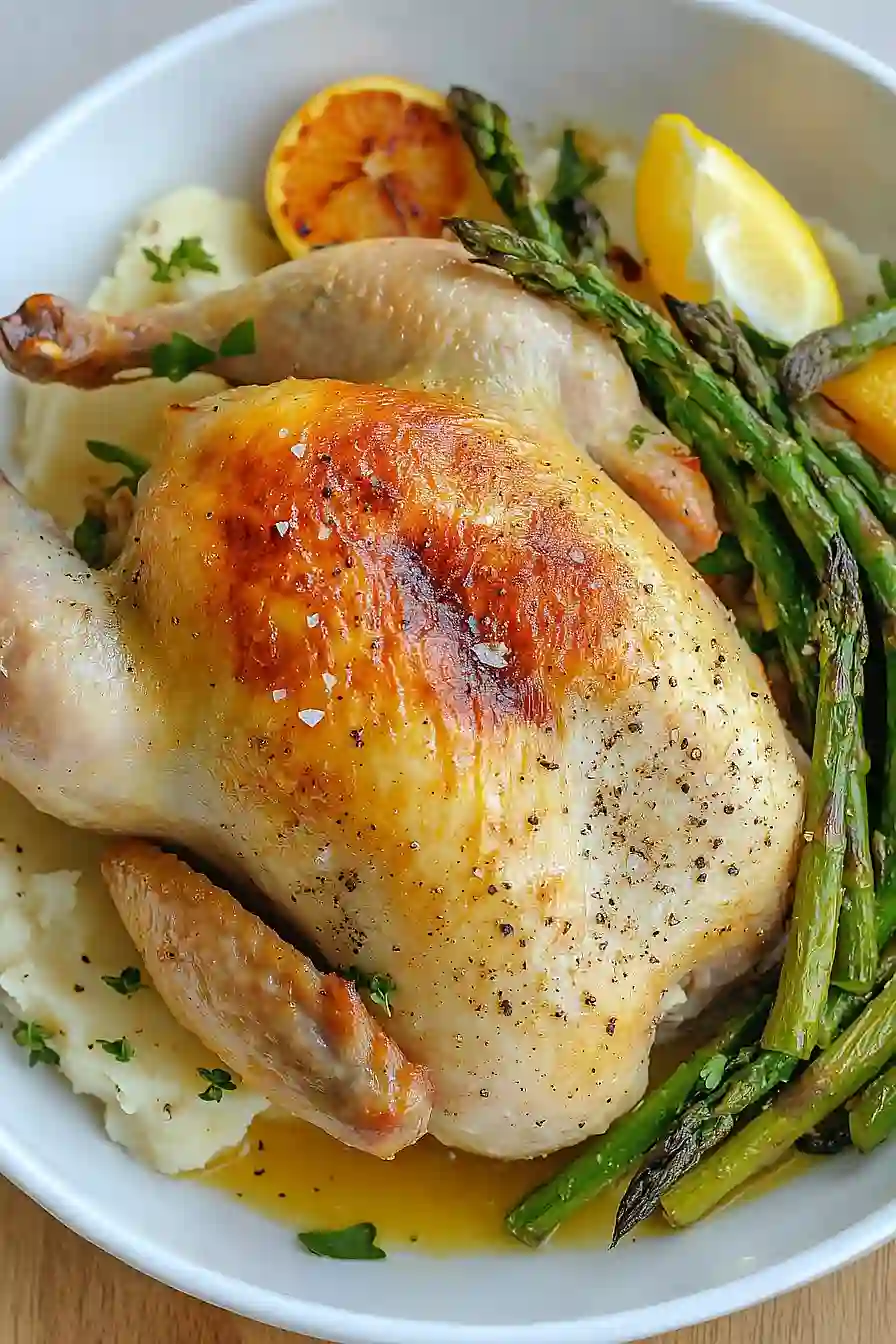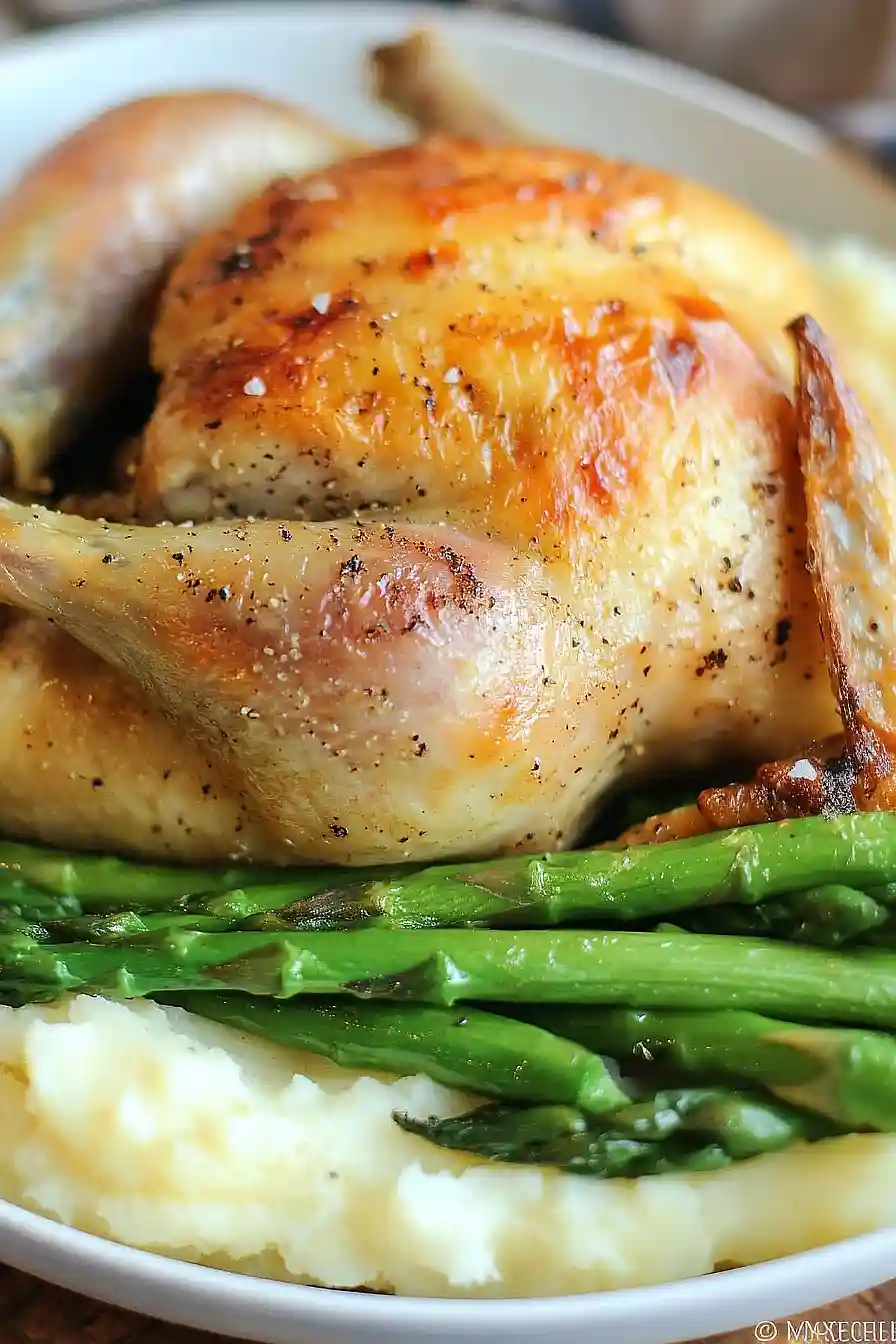Disclaimer: Our editors have used AI to create or enhance parts of this article. All content has been fact-checked by our team to ensure accuracy.
Finding a special dinner recipe that feels fancy but doesn’t require hours in the kitchen can feel like searching for a needle in a haystack. Between juggling work deadlines, after-school activities, and trying to keep up with everyday life, most of us don’t have the time to tackle complicated cooking projects, especially during the week.
That’s where these lemon rosemary Cornish hens come in: they’re simple enough for a weeknight dinner but special enough for company, take less than an hour to prepare, and use ingredients you can easily find at any grocery store.

Why You’ll Love These Cornish Hens
- Restaurant-quality dinner – These little birds look fancy on the plate but are surprisingly simple to prepare, making them perfect for date nights or small dinner parties.
- Simple ingredients – You only need a handful of basic ingredients – just herbs, lemon, garlic, and olive oil to create something special.
- Perfect portion control – Each person gets their own personal bird, which makes serving easy and looks impressive on the plate.
- Make-ahead friendly – You can prep these hens earlier in the day and pop them in the oven when you’re ready to cook, making dinner planning stress-free.
What Kind of Cornish Game Hens Should I Use?
When shopping for Cornish game hens, you’ll typically find them in the frozen section of your grocery store, though some markets carry fresh ones too. These little birds usually weigh between 1 to 2 pounds each, and either fresh or frozen will work great for this recipe. If you’re using frozen hens, just make sure to thaw them completely in the refrigerator for 24-48 hours before cooking. Look for birds that are plump with intact skin, and check that there aren’t any freezer burns if you’re buying frozen. For the best results, try to pick hens that are similar in size so they’ll cook evenly together in the oven.

Options for Substitutions
While this recipe is pretty straightforward, here are some helpful substitutions if you need them:
- Cornish game hens: If you can’t find Cornish hens, you can use small chickens (about 2-3 pounds each) instead. Just remember to increase the cooking time by about 15-20 minutes. You could also use chicken quarters, though you’ll need to adjust cooking time down slightly.
- Fresh rosemary and thyme: Fresh herbs work best here, but if you’re in a pinch, you can use dried herbs. Use 1 teaspoon dried rosemary and 1 teaspoon dried thyme. Remember – dried herbs are more concentrated than fresh ones.
- Fresh lemons: You can swap in oranges for a different citrus flavor, or use 3 tablespoons of bottled lemon juice if fresh lemons aren’t available.
- Fresh garlic: If you don’t have fresh garlic, use 1 teaspoon of garlic powder or 2 teaspoons of pre-minced garlic from a jar.
- Olive oil: Any neutral cooking oil like avocado oil or vegetable oil will work fine here. You could even use melted butter for extra richness.
Watch Out for These Mistakes While Roasting
The biggest challenge when cooking Cornish hens is preventing them from drying out – the key is to avoid overcooking these small birds, as they need less time than a standard chicken (they’re usually done in 45-60 minutes at 375°F).
A common mistake is not patting the skin dry before seasoning, which prevents that golden-brown, crispy skin everyone loves – take an extra minute to thoroughly dry the hens with paper towels and rub olive oil directly on the skin.
Temperature is crucial here, so invest in a meat thermometer and remove the hens when they reach 160°F in the thickest part of the thigh (they’ll continue cooking to the safe temperature of 165°F while resting).
For the most flavorful results, don’t skip the 10-15 minute resting period after cooking, and make sure to baste the birds every 15-20 minutes during roasting with the pan juices to keep them moist and flavorful.

What to Serve With Cornish Hens?
These little birds are perfect for creating an impressive dinner that deserves equally good side dishes! Since the hens are roasted with lemon and herbs, they pair wonderfully with roasted baby potatoes or a wild rice pilaf that can soak up all those tasty pan juices. I love serving them alongside simple roasted vegetables like carrots, Brussels sprouts, or asparagus – just toss them with olive oil and pop them in the oven while the hens are cooking. For a fresh element that balances the richness of the meat, try a light mixed green salad with a simple vinaigrette or some steamed green beans with a squeeze of lemon.
Storage Instructions
Keep Fresh: Got leftover Cornish hens? Place them in an airtight container and pop them in the fridge within 2 hours of cooking. They’ll stay good for up to 3-4 days. I like to keep the herbs and lemon slices with the meat to help maintain that nice flavor!
Freeze: These little birds freeze really well for future meals. Just wrap them tightly in plastic wrap or aluminum foil, then place in a freezer bag with the air squeezed out. They’ll keep for up to 4 months in the freezer – perfect for when you want a fancy dinner without the prep work!
Reheat: To bring your Cornish hens back to life, place them in a baking dish with a splash of chicken broth or water, cover with foil, and warm in a 350°F oven for about 20-25 minutes. This helps keep the meat moist and tender. You can also remove the meat from the bones before reheating if you prefer!
| Preparation Time | 15-20 minutes |
| Cooking Time | 60-70 minutes |
| Total Time | 75-90 minutes |
| Level of Difficulty | Medium |
Estimated Nutrition
Estimated nutrition for the whole recipe (without optional ingredients):
- Calories: 1200-1400
- Protein: 100-120 g
- Fat: 80-100 g
- Carbohydrates: 20-30 g
Ingredients
- 2 cornish hens
- Kosher salt and freshly ground pepper, to taste
- 2 lemons, cut into slices
- 2 stalks fresh rosemary
- 4 sprigs thyme, fresh
- 6 peeled garlic cloves
- 2 tbsp olive oil
Step 1: Prepare the Cornish Hens
- 2 Cornish hens
- kosher salt and freshly ground pepper, to taste
Preheat your oven to 400°F (200°C).
Remove any giblets from the interior of the Cornish hens and drain any accumulated juices.
Pat the hens dry thoroughly with paper towels, then season both inside and out with kosher salt and freshly ground pepper.
Set the seasoned hens aside while preparing the baking dish.
Step 2: Layer the Baking Dish with Aromatics
- 2 lemons, cut into slices
- 2 stalks fresh rosemary
- 4 sprigs thyme, fresh
- 6 peeled garlic cloves
In the bottom of your baking dish, arrange the sliced lemons in an even layer—it’s okay if they slightly overlap.
Scatter the fresh rosemary and thyme evenly over the lemon slices.
Lightly smash the peeled garlic cloves with the side of a knife, then place the smashed garlic around the dish, mingling with the herbs and lemons.
Step 3: Position and Oil the Hens
- seasoned Cornish hens from Step 1
- aromatics from Step 2
- 2 tbsp olive oil
Place the seasoned Cornish hens (from Step 1) breast side up on top of the prepared lemon, herb, and garlic bed (from Step 2) in the baking dish.
Drizzle the olive oil evenly over the hens, then gently massage it over their skin using clean hands or a basting brush.
I find this helps achieve a golden, crispy skin in the oven.
Step 4: Roast the Cornish Hens
Roast the hens in the preheated oven for 60–70 minutes, basting them halfway through with the pan juices that collect in the dish.
After about an hour, check for doneness by inserting a meat thermometer into the thickest part of the breast—the internal temperature should reach 165°F (74°C) and the juices should run clear.
Remove the baking dish from the oven once fully cooked.
Step 5: Rest and Serve
Loosely tent the roasted hens with aluminum foil and allow them to rest for 5–10 minutes so the juices can redistribute, ensuring tender and juicy meat before serving.
I always let them sit this extra bit to keep the hens moist and flavorful.
Serve warm with your favorite side dishes and enjoy!

